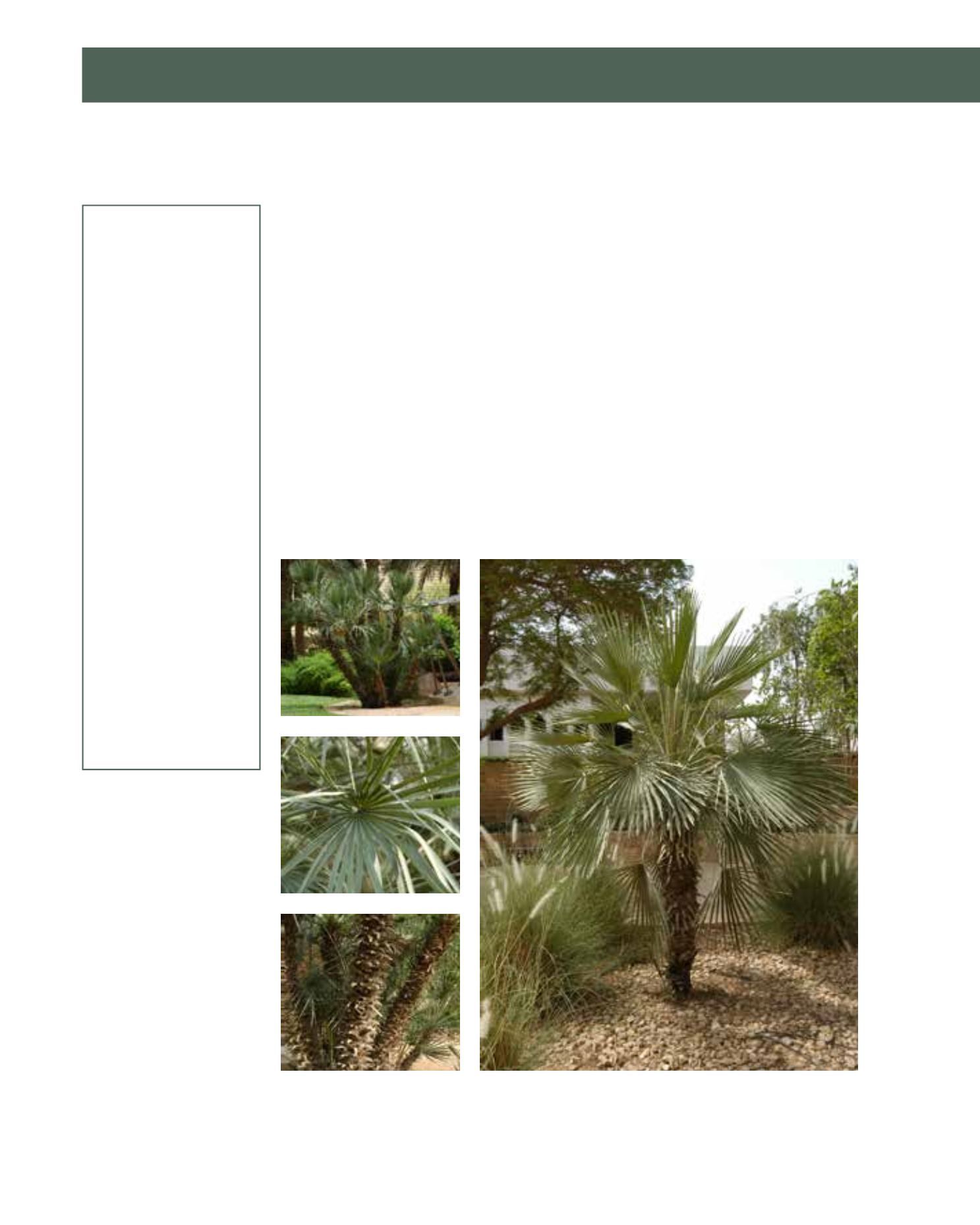

GENERAL
Origin
:
sub-Mediterranean,
Mediterranean
Vigour
:
normal growth
rate
Humidity
:
semi-arid, semi-
humid, very
humid
Propagation :
sowing and
pricking out
Maintenance :
moderate
CONDITIONS
Urban climate :
resistant
Dessication :
resistant
Stagnant water :
vulnerable
Irrigation
:
medium
Salinity/ppm :
moderate (1800
ppm)
Hardiness
:
-12°C
SHAPE
Type
:
shrub
Height
:
1 m-4 m
Spread
:
1 m-3 m
Foliage
:
evergreen
FLOWER
Colour
:
yellow
Size
:
15 cm - 35 cm
Period
:
June - July
FRUIT
Type of fruit :
drupe(fleshy/
juicy)
Fruit size
:
1.2 cm - 3 cm
Toxicity
:
inedible, fruit
The Dwarf Fan Palm is native to the Mediterranean area and is one of the few palms to grow na-
turally in Europe. These small palms are often seen in Arriyadh, where they withstand occasional
cold snaps with frost well. In the wild, they usually have a single trunk some 4 metres high, while
cultivated ones are mostly multi-stemmed. Unless trimmed, the trunk is covered by remnants of
old fronds. The fans are triangular spades 60 cm across and sharp thorns align the margins of the
petiole that measures more than 1 metre in length. Yellow inflorescences appear in early summer
at the base of the crown. Male and female flowers usually grow on different plants. In autumn,
tiny, inedible dates develop to 1 cm in diameter with yellow, orange or brown rind. Dwarf Fan
Palms are very tough and tolerate full sun, wind and some salinity. Drought is tolerated by an
established specimen, but stagnant water may kill it. Rich, well-drained soil and deep, regular
irrigation are preferred. C. humilis can be planted very decoratively in Arriyadh. They make
striking accent plants in rock gardens and containers, and look good in groups on slopes where
they do not have to compete with larger shrubs or trees. In former times, the fibres were used for
making mats, ropes and brooms. Nowadays, the leaves may be fabricated as a substitute for linen
or as ‘vegetable horsehair’. Propagation by seed is most common, but offshoots can be detached
from a clump. Maintenance is low: removal of dead fronds and unwanted shoots is occasionally
necessary.
99
Chamaerops humilis,
Arecaceae
Dwarf Fan Palm
















